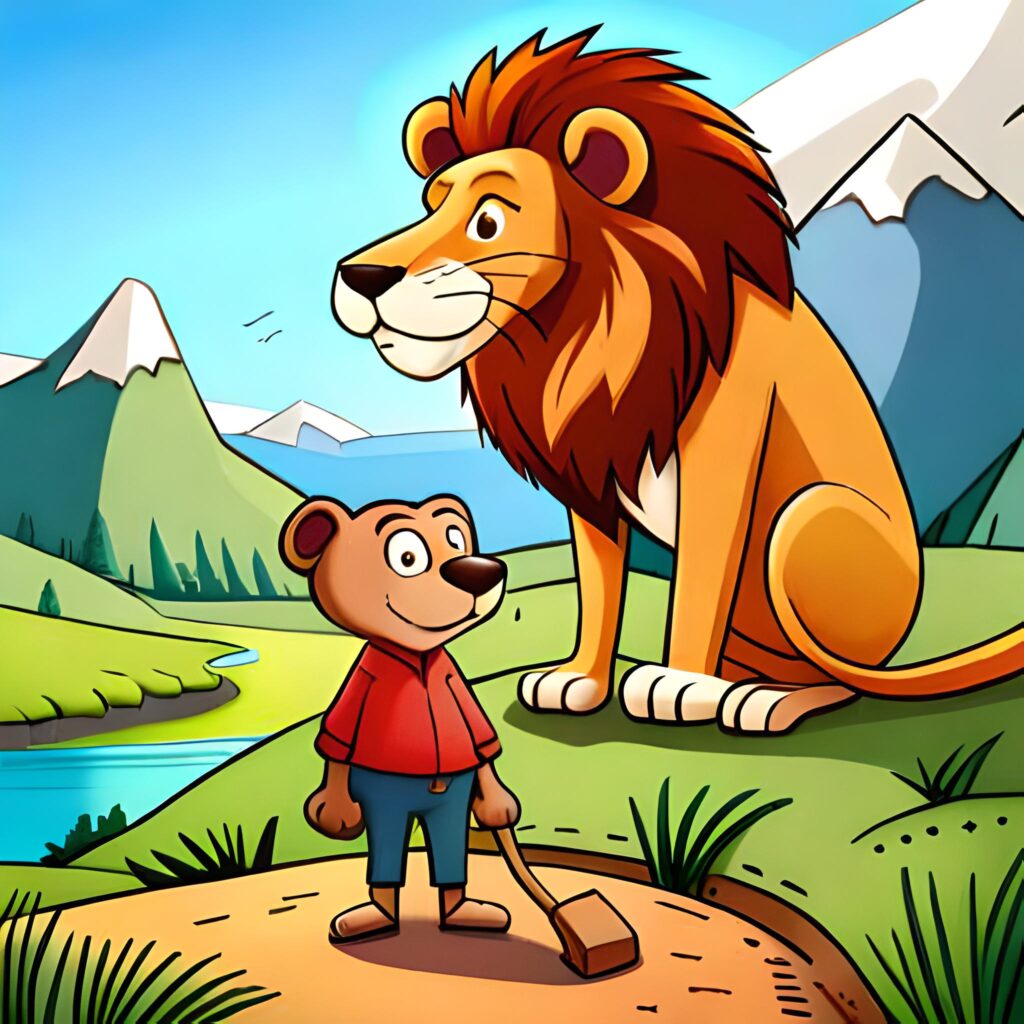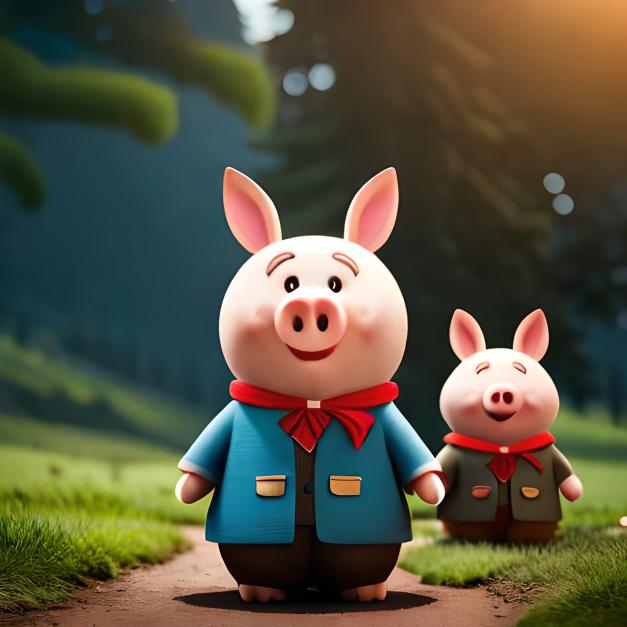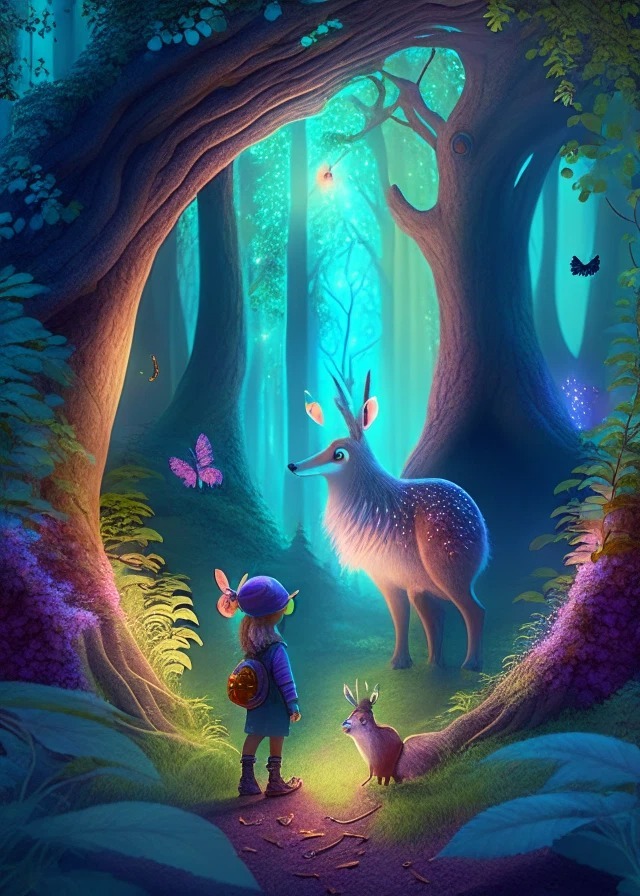Bedtime is a popular genre of short stories for kids. They are typically read to children before they go to sleep and are designed to engage their imagination, curiosity, and emotions.
Bedtime books often fall into the genres of fairy tales, fantasy, or adventure. These genres are popular because they transport children to magical worlds, where anything is possible. They feature mythical creatures, talking animals, and enchanting kingdoms that capture a child’s imagination and allow them to dream.
Small bedtime stories also have an emotional impact on children. They often feature relatable themes such as friendship, bravery, and overcoming challenges. Children empathize with the characters and experience a range of emotions, such as joy, fear, sadness, and excitement. This emotional connection strengthens the child’s engagement with the story and leaves a lasting impression.
What is a Good Bedtime Story?
What are the best Bedtime Stories?
Bedtime Short Stories Genre: Examples
Best Bedtime Stories with Morals and Pictures
Childrens bedtime story
Stories: A Collection of Fairy Tales and Folklore
“Bedtime Stories” is a compilation of timeless fairy tales and folklore from around the world. It features well-known stories like “Cinderella,” “Sleeping Beauty,” and “Hansel and Gretel,” alongside lesser-known tales from different cultures. This collection showcases the main features of the bedtime story genre, including magical elements, moral lessons, and the power of imagination.
The appeal of bedtime stories lies in their ability to transport readers to another world before sleep, providing a sense of comfort and relaxation. They often follow a familiar structure, where the protagonist encounters obstacles, overcomes them with virtues like kindness or bravery, and eventually finds their happy ending. This format helps children process emotions and learn important values.
Moreover, bedtime stories reflect the diversity and cultural richness of various societies. They include tales from Asia, Africa, Europe, and other regions, exposing readers to different traditions, customs, and worldviews. This diversity promotes empathy and cultural understanding among readers of all ages.
Additionally, the relevance of bedtime stories persists through generations due to their enduring themes like cars, dinosaurs, preschool, cats, for all grades for children. While cultural and societal values may change over time, the underlying messages of hope, love, and the triumph of good over evil remain timeless and universal. Bedtime stories continue to captivate readers today, showcasing their enduring relevance.
Bedtime Short Stories Genre: Authors
Some famous authors of the genre of bedtime stories books for toddlers include:
1. Hans Christian Andersen:
Andersen is often referred to as the father of the modern fairy tale. He contributed to the development and popularity of bedtime stories by creating timeless tales that captivate the imagination of both children and adults. Some of his most notable works include “The Little Mermaid,” “The Ugly Duckling,” and “The Emperor’s New Clothes.” Andersen’s stories have influenced countless other writers and remain beloved by readers all over the world.
2. Beatrix Potter:
Potter is best known for her charming children’s books featuring anthropomorphic animals, such as “The Tale of Peter Rabbit.” Her stories are often read as bedtime stories due to their gentle and soothing nature. Potter’s use of beautiful illustrations and captivating storytelling style contributed to the popularity of bedtime stories and continue to inspire generations of readers.
3. Maurice Sendak:
Sendak revolutionized the genre of children’s literature with his groundbreaking book “Where the Wild Things Are.” His imaginative storytelling, combined with his striking and vivid illustrations, captivated readers of all ages. Sendak’s contributions to the genre have impacted other writers, as he showed that bedtime stories can tackle complex themes and emotions while still appealing to children.
4. Dr. Seuss (Theodor Geisel):
Although primarily known for his nonsensical and rhyming stories, Dr. Seuss created bedtime stories that entertained and educated children with their whimsical characters and imaginative worlds. His most notable works include “The Cat in the Hat,” “Green Eggs and Ham,” and “Oh, the Places You’ll Go!” Dr. Seuss’s unique style and memorable characters have influenced countless authors and continue to be cherished by both children and adults.
These authors have collectively contributed to the development and popularity of bedtime stories by creating engaging and enchanting tales that have stood the test of time. Their works have not only entertained generations of readers but have also paved the way for other writers in the genre to explore the power and magic of storytelling before bedtime.
Small Sleep Stories Genre : History
The genre of bedtime stories emerged over centuries, with a more formalized concept of storytelling before sleep becoming prominent in the 18th and 19th centuries. Bedtime stories were predominantly shared in households across various cultures as a way to entertain and educate children before they went to sleep.
Historical, cultural, and social factors played significant roles in the emergence of bedtime stories. One influential factor was the shift towards childhood as a distinct life stage, which began to gain recognition during the Enlightenment period. With society increasingly valuing the innocence and vulnerability of children, storytelling before bed became a means to nurture and educate young minds while promoting moral values.
Various pioneers and innovators contributed to the development of bedtime stories. The German authors Jacob and Wilhelm Grimm, known as the Brothers Grimm, are renowned for their collection of fairy tales published in the early 19th century. Their works, such as “Cinderella,” “Little Red Riding Hood,” and “Rapunzel,” have become classics in the genre.
Bedtime story to read online
Other important contributors include Hans Christian Andersen, a Danish author known for fairy tales like “The Little Mermaid” and “The Ugly Duckling,” as well as Charles Perrault, a French writer who popularized stories such as “Sleeping Beauty” and “Cinderella.”
Several landmark works and trends have shaped the genre of sleep stories. The proliferation of illustrated children’s books, particularly in the 19th and 20th centuries, elevated the visual appeal of bedtime stories. Additionally, the introduction of characters like Winnie-the-Pooh by A.A. Milne, Peter Pan by J.M. Barrie, and Alice in Wonderland by Lewis Carroll became iconic figures in the genre.
Contemporary authors such as Dr. Seuss, Roald Dahl, and J.K. Rowling have also made significant contributions to the bedtime story genre, creating memorable characters like The Cat in the Hat, Matilda, and Harry Potter, respectively.
Overall, the genre of bedtime stories has evolved alongside changing societal attitudes towards childhood and the need for tales that entertain, educate, and comfort young listeners.
Bedtime Short Stories Genre: Characteristics
1. Key characteristics:
The genre of bedtime stories for toddlers is typically short, simple, and easy to understand narratives that are designed to be read aloud to children before they go to sleep. They often have a calming and soothing tone and focus on themes and topics that are relevant to a child’s world.
2. Language:
Bedtime stories use language that is accessible and appropriate for children, typically with simple vocabulary and sentence structures. The language may also include repetition and rhyme to engage the child and create a musical or sing-song effect.
3. Plot:
Bedtime stories usually have simple and straightforward plots that are easy for children to follow. These stories often revolve around everyday experiences or common adventures that are relatable to children.
4. Characters:
The characters in bedtime stories are often anthropomorphic animals, mythical creatures, or other imaginative beings. These characters can be relatable and offer moral lessons or positive examples for children to learn from.
5. Setting:
The setting in sleep stories often incorporates familiar locations such as homes, forests, or imaginative places like magical kingdoms. These settings provide a sense of comfort and familiarity to the child.
6. Tone:
The tone of bedtime stories is usually gentle, calm, and positive. The stories aim to create a peaceful atmosphere to help children relax and fall asleep.
7. Typical themes, topics, and messages:
Bedtime stories often touch on themes such as friendship, bravery, kindness, problem-solving, imagination, and the importance of family. They may also address common childhood fears or anxieties, like the dark or monsters, and offer reassurance and comfort to the child.
8. Relation to kids’ interests and needs:
Sleep stories cater to the interests and needs of children by providing them with engaging and relatable content before going to sleep. These stories can help children wind down after a busy day, stimulate their imagination, and offer comfort through positive and reassuring messages. Additionally, bedtime stories provide an opportunity for bonding between children and their caregivers, as they share these special moments together.
Bedtime Short Stories Genre: Benefits
Bedtime stories, the genre mentioned, hold numerous benefits for children. Here’s how they enhance reading comprehension, vocabulary, critical thinking skills, broaden horizons, enrich culture, foster creativity, and motivate and empower children.
1. Reading Comprehension:
Bedtime stories improve a child’s reading comprehension by exposing them to different sentence structures, paragraph organization, and storytelling techniques. This helps them understand how narratives are developed and encourages them to ask questions about the plot, characters, and events.
2. Vocabulary:
Regular exposure to a variety of words and phrases through bedtime stories expands a child’s vocabulary. As they encounter new words in context, they learn their meanings, usage, and pronunciation, ultimately bolstering verbal communication skills.
3. Critical Thinking Skills:
Small Sleep Stories often present imaginative scenarios, complex characters, and moral dilemmas. This encourages children to think critically and consider different perspectives. They learn to analyze characters’ actions, predict outcomes, and make connections between the story and their own experiences.
4. Broadening Horizons:
Small bedtime stories introduce children to diverse settings, cultures, and perspectives. This exposure promotes empathy, tolerance, and understanding of different backgrounds. It broadens their horizons, instills an appreciation for diversity, and encourages them to embrace differences.
5. Enriching Culture:
Bedtime stories, often rooted in cultural folklore, teach children about their heritage and the traditions of different communities. This exposure enriches their understanding of cultural practices, legends, myths, and history, fostering a stronger connection to their own culture or inspiring an interest in other cultures.
6. Fostering Creativity:
Bedtime stories stimulate a child’s imagination through vivid descriptions, colorful illustrations, and imaginative plots. They encourage creativity, as children may develop their own stories and characters, expanding their creative thinking skills and story crafting abilities.
7. Motivation and Empowerment:
Engaging bedtime stories featuring relatable characters and inspiring themes motivate and empower children. They can see themselves in the shoes of brave heroes overcoming challenges, exploring new worlds, or achieving their dreams. These stories serve as a source of inspiration, building confidence and self-belief in pursuing their goals.
In summary, bedtime stories play a pivotal role in developing children’s reading comprehension, vocabulary, critical thinking, and creativity. Additionally, they broaden horizons, enrich culture, and motivate and empower children to chase their aspirations, making bedtime an ideal opportunity to immerse children in the joys of storytelling.
Small Sleep Stories Genre: Tips
Tips for Reading:
1. Create a calm and cozy environment: Dim the lights, use soft background music, and ensure a comfortable seating arrangement to enhance the bedtime reading experience.
2. Use a soothing voice: Speak in a gentle and rhythmic manner to create a relaxed atmosphere and help children wind down before sleep.
3. Choose age-appropriate stories: Consider the child’s interests and select sleep stories that are engaging, comforting, and suitable for their developmental stage.
4. Incorporate interactive elements: Encourage children to participate by inviting them to predict what might happen next or asking questions about the story.
5. Read regularly: Make bedtime reading a consistent habit to promote a love of books and storytelling.
Tips for Writing:
1. Focus on themes of comfort and imagination: Bedtime stories should have elements that are comforting, nurturing, and spark a child’s imagination.
2. Keep the story concise: Young children may have shorter attention spans before sleeping, so writing shorter stories or using repetitive phrases can help maintain their interest.
3. Use descriptive language: Engage children’s senses by using descriptive words to paint vivid mental images that can transport them into the story world.
4. Incorporate a sense of closure: Bedtime stories often provide a sense of resolution or end on a positive note to encourage a peaceful transition to sleep.
5. Include familiar elements: Incorporate familiar or relatable elements like favorite characters or places to create a sense of familiarity and comfort.
Tips for Teaching:
1. Model relaxation techniques: Incorporate calming strategies like deep breathing or gentle stretching before reading to help children relax.
2. Encourage personal connections: Prompt students to share their own experiences or opinions related to the themes or characters in bedtime stories.
3. Discuss sleep routines and habits: Talk about the importance of establishing a consistent bedtime routine and the benefits it can have on overall sleep quality.
4. Foster imagination and creativity: Engage students in activities like drawing or storytelling inspired by the bedtime genre, allowing them to explore their creativity.
5. Promote independent reading habits: Provide access to age-appropriate bedtime books in the classroom to encourage children to read on their own before sleep.
Improving Skills and Techniques:
1. Read diverse bedtime stories: Expand your knowledge of the genre by exploring a wide range of bedtime stories from different authors and cultures.
2. Observe and learn from experts: Attend webinars, workshops, or conferences focused on children’s literature to gain insights and techniques from experienced educators and authors.
3. Practice reading aloud: Enhance your storytelling skills by regularly practicing reading bedtime stories aloud, focusing on voice modulation and pacing.
4. Seek feedback: Ask for feedback from children or fellow educators to improve your storytelling techniques, and be open to constructive criticism for continuous growth.
5. Engage in professional development: Consider taking courses or pursuing certifications specifically focused on children’s literature and storytelling to enhance your skills and knowledge further.
Using the Genre to Engage, Challenge, and Support Children:
1. Encourage dialogues: Prompt conversations about the themes or messages conveyed in sleeping stories to engage children in critical thinking and reflection.
2. Explore emotions: Bedtime stories often address emotions, so use them as a tool to help children identify, express, and manage their own emotions.
3. Foster empathy: Discuss character perspectives and motivations, encouraging children to understand and relate to different emotions experienced by the characters.
4. Support relaxation: Utilize the calming and soothing nature of bedtime stories to help children reduce anxiety or stress before sleep.
5. Personalize the experience: Incorporate children’s interests, experiences, or names into improvised versions of bedtime stories to make them feel more involved and connected.
How do Sleep Stories Work?
Bedtime stories are purposefully designed to help you fall asleep and can even be a shortcut to dreaming. This is because we rarely think about the words being read to us; instead, we paint a picture in our minds of what is happening. In the REM (rapid eye movement part of our sleep cycle), our dreams are at their most intense and are in pictures. Switching on our brain’s imagination before dozing off with bedtime stories can help us prepare for a restful night .
Bedtime stories for adults are delivered calmly and soothingly, relaxing to listen to. As kids, we took comfort from a parent’s voice telling us a story that took our little minds away from the thoughts of ghosts under the bed. The same goes for adulthood – the only difference being that our minds are steered away from our stresses and troubles, which calms racing thoughts and can help us to sleep. These bedtime stories are also prepared so that they have no real climax. Narratives only engage the listener enough to distract them from constant thoughts and not enough to wake them up and get excited.
What is the Best Sleep Story app?
There are many sleep story apps available, each with its own unique features. Here are some of the best sleep story apps according to:
- Calm: This app offers bedtime story recordings ranging from 25 to 40 minutes in length, providing plenty of time for you to drift off to sleep. It also offers calming music and daily meditations. The premium package costs £34.99/year .
- Headspace: This app offers guided meditations from stress to sleep, plus sleep sounds to help you fall asleep. It has over 10 million downloads.
- Moshi: This app is a sleep story app geared toward children, but it can be enjoyed by adults as well. It offers a variety of stories, including original tales and classic fairy tales, all designed to help you fall asleep. It has a free trial period, after which it costs $4.99/month.
- Yours App: This app offers a variety of bedtime stories, including classic fairy tales and original stories. It also offers a feature that allows you to create your own bedtime story using your own voice. It costs $9.99/month .




